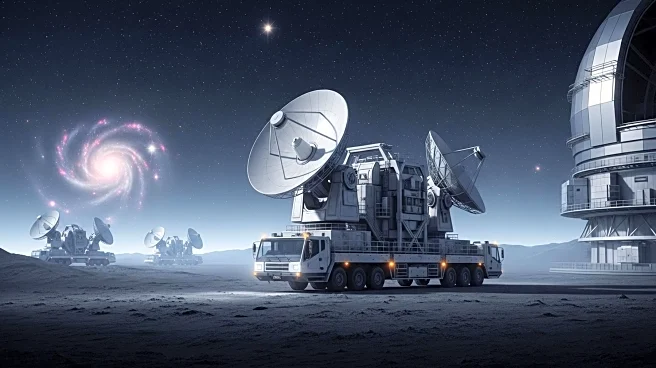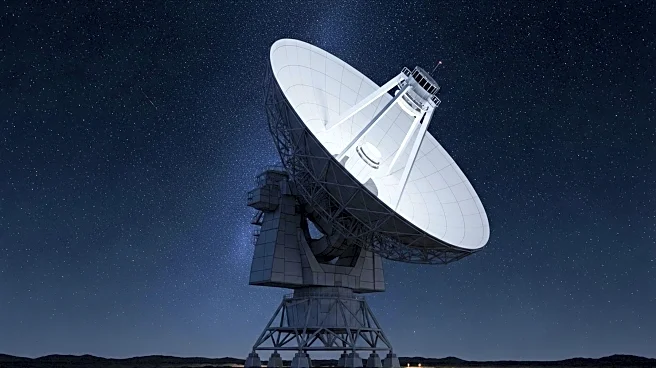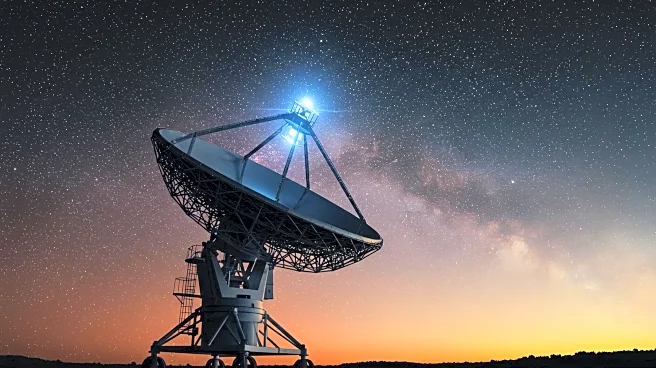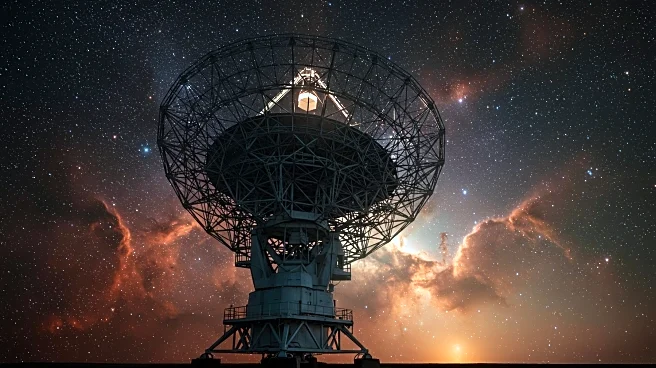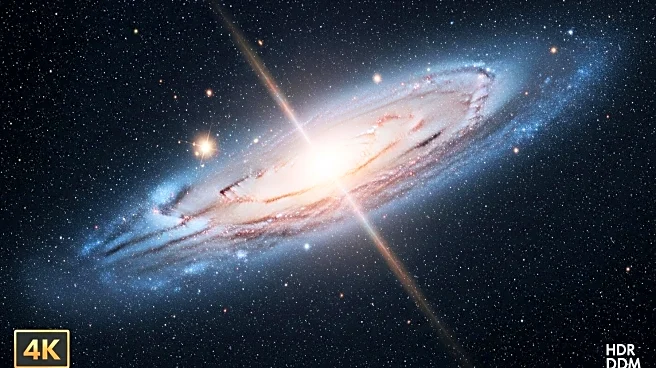Rapid Read • 6 min read
The Atacama Large Millimeter/submillimeter Array (ALMA) in the Atacama desert is utilizing its massive radio dishes to study cosmic structures at radio wavelengths. These dishes, weighing up to 100 tons, are moved using specialized transporters named Otto and Lore, which weigh approximately 135 tons each. These transporters are essential for maintaining continuous power and minimizing data collection gaps during dish relocation. ALMA's ability to rearrange its radio dish array provides a significant advantage over other observatories, allowing it to observe the cosmos at millimeter and sub-millimeter wavelengths, crucial for studying phenomena like protoplanetary disks and star-forming areas.
AD
ALMA's capability to move its radio dishes with precision enhances its observational power, making it a key hub for astronomers worldwide. This flexibility allows ALMA to maintain its cutting-edge status in radio astronomy, providing valuable insights into distant cosmic phenomena. The observatory's location and technological advancements enable it to contribute significantly to our understanding of the universe, supporting research in areas such as star formation and molecular clouds. ALMA's operations demonstrate the importance of infrastructure and technology in advancing scientific knowledge and maintaining leadership in astronomical research.
AD
More Stories You Might Enjoy
